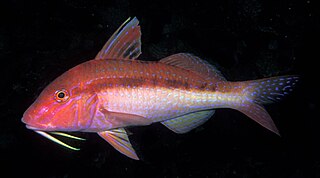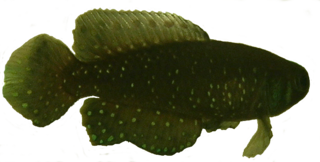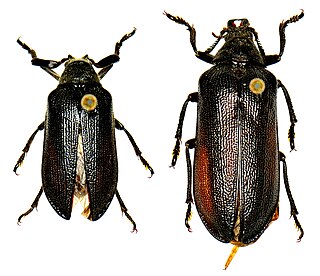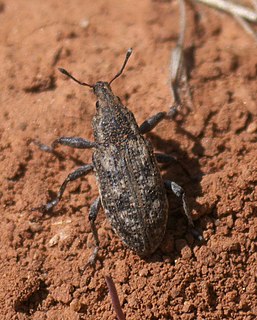
The saltwater crocodile is a crocodilian native to saltwater habitats and brackish wetlands from India's east coast across Southeast Asia and the Sundaic region to northern Australia and Micronesia. It has been listed as Least Concern on the IUCN Red List since 1996. It was hunted for its skin throughout its range up to the 1970s, and is threatened by illegal killing and habitat loss. It is regarded as dangerous to humans.
Local extinction, also known as extirpation, is the condition of a species, plants or animals, that ceases to exist in a chosen geographic area of study, though it still exists elsewhere. Local extinctions are contrasted with global extinctions.

Bhitarkanika National Park is a 145 km2 (56 sq mi) large national park in northeast Kendrapara district in Odisha in eastern India. It was designated on 16 September 1998 and obtained the status of a Ramsar site on 19 August 2002. The area is also been designated as second Ramsar site of the State after the Chilika Lake. It is surrounded by Bhitarkanika Wildlife Sanctuary, which spread over 672 km2 (259 sq mi). Gahirmatha Beach and Marine Sanctuary are to the east, separating swamp region and mangroves from the Bay of Bengal. The national park and wildlife sanctuary is inundated by the rivers Brahmani, Baitarani, Dhamra, Pathsala. It hosts many mangrove species, and is the second largest mangrove ecosystem in India.

Upeneichthys lineatus, also known as the blue-striped mullet, blue-lined goatfish. blue-striped goatfish, blue-spotted goatfish and blue striped red mullet, is a species of marine ray-finned fish, a goatfish from the family Mullidae. It is native to the Pacific coast of Australia. It occurs in sheltered areas over rocky and sandy substrates and can be found 5 to 100 metres, though rarer below 40 metres (130 ft). This species can reach a length of 40 centimetres (16 in) FL. This species is commercially important.

The smalltail shark is a species of requiem shark, and part of the family Carcharhinidae. It is found in the western Atlantic Ocean, from the northern Gulf of Mexico to southern Brazil. It inhabits shallow waters close to shore, particularly over muddy bottoms around estuaries. It tends to swim low in the water column and forms large aggregations segregated by sex. A slim species generally not exceeding 1.1 m (3.6 ft) in length, the smalltail shark has a rather long, pointed snout, a broad, triangular first dorsal fin, and a second dorsal fin that originates over the midpoint of the anal fin base. It is plain gray in color, without prominent markings on its fins.

The Caribbean sharpnose shark is a requiem shark, and part of the family Carcharhinidae.

The Daruma pond frog is a species of frog in the family Ranidae. It has two subspecies, P. porosus porosus and P. porosus brevipodus. It is endemic to Japan. The average size of males is 3.5 to 6.2 cm, while females are from 3.7 to 7.3 cm.

Cynolebias is a genus of freshwater annual killifish in the family Rivulidae. They are endemic to northeastern Brazil, generally in temporary waters such as ponds in the Caatinga and adjacent regions. By far the highest species richness is in the São Francisco River basin, but there are also species east and north of this system, and west as far as the Tocantins River basin. Many species have rather small distributions and some are highly threatened.

The Pacific smalltail shark is a species of requiem shark, in the family Carcharhinidae. It was described in 1898, but later mistakenly merged with Carcharhinus porosus. The mistake was corrected in 2011.

Crocodile farming in the Philippines refers to agricultural industries involving the raising and harvesting of crocodiles for the commercial production of crocodile meat and crocodile leather.

Sandalus niger, known generally as the cedar beetle or cicada parasite beetle, is a species of cicada parasite beetle in the family Rhipiceridae. It is found in North America.

Sandalus is a genus of cicada parasite beetles in the family Rhipiceridae.
Sandalus californicus is a species of cicada parasite beetle in the family Rhipiceridae. It is found in North America.

Apleurus is a genus of cylindrical weevils in the beetle family Curculionidae. There are about eight described species in Apleurus.
Sandalus petrophya, the cedar beetle, is a species of cicada parasite beetle in the family Rhipiceridae. It is found in North America.

Hylastes is a genus of crenulate bark beetles in the family Curculionidae. There are more than 90 described species in Hylastes.

Chalepus is a genus of tortoise beetles and hispines in the family Chrysomelidae. There are more than 90 described species in Chalepus.
Acalles porosus is a species of hidden snout weevil in the family of beetles known as Curculionidae. It is found in North America.
Cryptocarenus is a genus of typical bark beetles in the family Curculionidae. There are more than 20 described species in Cryptocarenus.
Plocetes is a genus of leguminous seed weevils in the beetle family Curculionidae. There are more than 60 described species in Plocetes.












